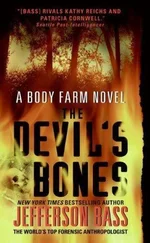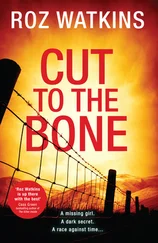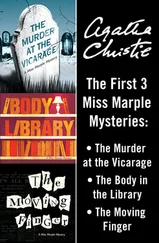“Yonder comes another one,” Meffert said, “right out of the evidence bag.” Sure enough, at that moment a second wasp emerged from the open bag and made a beeline for my wrist, drawn by the “danger” pheromones the first one had given off. Meffert’s hand darted downward, and by the time I realized what he was doing, he had caught and crushed the wasp in midair, barehanded. “Sumbitches must be nesting in that skull,” he said. I was dubious, but not for long; two more wasps emerged from the bag, both of them deftly dispatched by Meffert. We watched and waited, but the attack seemed to be over.
“You’re quick, Bubba,” I said, rubbing my wrist. “You that fast on the draw with a gun?”
He smiled. “Nobody’s ever give me a reason to find out.”
“Well, watch my back, if you don’t mind.”
I resumed my inspection of the postcranial skeleton, scanning the bones from neck to feet. “Y’all were right about the size,” I said. “Just guessing, I’d say right around five feet. And female,” I added, bending low over the flare of the hip bones. “And young.”
“How young?” asked Cotterell.
I hedged. “Be easier to tell once we get the bones back to the lab and finish cleaning ’em up. But I’m guessing teenager.”
“Any chance this is just some old Indian skeleton?” the sheriff asked hopefully. “Make our job a hell of a lot easier if she was.”
“Sorry, Sheriff,” I said. “She’s definitely modern.”
Meffert chuckled. “Isn’t that what you said about that dead guy over near Nashville a couple years ago? The one turned out to be a Civil War soldier?”
“Well, she’s lying on top of all this shale,” I pointed out. “If she’s not modern, this must be the world’s oldest strip mine.” I said it with a smile, but the smile was forced, and it was contradicted by the deep crimson my face had turned at the reminder of the Civil War soldier.
“Don’t take it so hard, Doc,” Meffert added. “You only missed it by a hunnerd-something years.”
“Too bad that soldier didn’t have a tree growing outta his head,” the sheriff added. “Big ol’ pecan tree, with a historical marker on it? You’da got it right for sure.”
Meffert grinned. So did I, my teeth clenched behind drawn lips.
WE RODE IN SILENCEdown the winding mountain blacktop toward Wartburg. Tyler was absorbed in the fossil he’d brought back, his fingers tracing the intricate diamond patterning as if he were blind, examining it by touch alone.
For my part, I was brooding about the parting shots by the TBI agent and the sheriff. They’d been joking, good-naturedly, no doubt, but the conversation had stung, even worse than the wasp, and the sting took me back, in my mind, to the event they were dredging up. Just after my move to Knoxville, I’d been called to a rural county in Middle Tennessee, where a decomposing body had been found in a shallow grave behind a house. The remains were in fairly good shape, as rotting bodies go—pink tissue still clung to the bones—and I’d estimated that the man had died about a year before. In fact, we later learned, the dead man was Col. William Shy, a Civil War soldier killed in the Battle of Nashville in 1864.
In hindsight, there were logical reasons I’d missed the time-since-death mark so widely. Colonel Shy had been embalmed, and until modern-day grave robbers had looted the grave—looking for relics—the body had been sealed in an airtight cast-iron coffin, which had kept bugs and bacteria at bay. But those explanations sounded more like excuses than I liked. They also provided precious little comfort in court, I’d learned, again and again: Hostile defense attorneys in contemporary criminal cases took great delight in bringing up Colonel Shy, rubbing my nose in my blunder as a way of undermining my testimony against their clients.
Colonel Shy wasn’t the only case where I’d been derailed by difficulty in determining time since death. Another murder case—a case I’d consulted on shortly before my move to Knoxville—still haunted me. A suspect in the case had been seen with the victim two weeks before the body had been found—the last known sighting of the victim—and the investigator and prosecutor pressed me hard: Could I testify, with certainty, that the murder had occurred then? “No,” I’d been forced to admit, “not with any scientific confidence.” As a result, the suspect had gone free.
Hoping to fill the gaps in my knowledge—determined to avoid such frustrations and humiliations in the future—I had combed through stacks of scientific journals, seeking data on decomposition. But apart from a few musty articles about insect carcasses—dead bugs found in bodies exhumed from old cemeteries—I’d found virtually nothing. Nothing recent, at any rate, though I had come across a fascinating handbook written by a death investigator in China centuries before, in 1247 A.D.—a research gap of more than seven centuries. The good news was, I wasn’t the only forensic anthropologist who was flying by the seat of his pants when estimating time since death. The bad news was, every forensic anthropologist was flying by the seat of his pants.
The interesting news, I realized now, as Tyler and I reached the base of the mountain, and the road’s hairpin curves gave way to a long, flat straightaway, was that the field was wide open. Time since death—understanding the processes and the timing of postmortem decomposition—was fertile ground for research.
The sun was low in the sky, a quarter moon high overhead, when Tyler and I passed through Wartburg’s town square on our way back to Knoxville. As I glanced up at the courthouse belfry, still pondering ways to unlock the secrets of time since death, I found myself surrounded by markers and measures of time: A frozen clock. A fossilized town. An ancient fern. The bones of a girl who would never reach adulthood.
A girl for whom time had stopped, sometime after wildcat miners had ravaged a mountainside; sometime before a papery seed had wafted from a tree, and a wasp queen had begun building her papery palace in the dark.
CHAPTER 2
Satterfield
SATTERFIELD OPENED THE DOORand reached into the wire-mesh hutch. Grasping the soft, loose skin just behind the ears, he raised the animal slightly, then cupped a hand beneath the chest and lifted it out of the hutch. The rabbit was young and small—scarcely larger than the palm of Satterfield’s hand—and its large, luminous eyes dominated its face, in the way of all baby mammals. The eyes flitted back and forth, and the animal trembled.
Satterfield crossed the room to a second enclosure, also made of wire mesh. This one was sturdier and larger—as big as a baby’s playpen, though only half as high—and its floor was covered with sandy earth, flat rocks, and good-sized pieces of driftwood. The enclosure was split down the middle by a removable panel of wire mesh, inserted through a narrow slit in the top. Cupping the rabbit to his chest, Satterfield stooped to unlatch the door in the top, then set the animal inside. It sat, motionless except for the tremor. On the other side of the divider, the other side of the cage, Satterfield glimpsed a trace of movement, slow at first, then more rapid: a slender, bifurcated black ribbon of tongue sliding in and out of a mouth, flicking as it sampled the new scent in the air.
The snake—a fer-de-lance that Satterfield had paid a thousand dollars to have imported from Costa Rica—measured four feet long and three inches thick; its broad back was saddled, from neck to tail, by bold, black-and-tan diamonds. The head—a flat-topped triangle with thin black stripes running from the eyes to the back of the jaws—was nearly as broad as Satterfield’s hand.
Читать дальше











